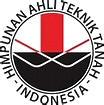Tinjauan Penerapan Kesehatan dan Keselamatan Kerja Proyek Jalan, Lereng dan Jembatan pada Masa New Normal Pandemi Covid-19 di Sulawesi Tengah
DOI:
https://doi.org/10.22487/renstra.v4i2.569Keywords:
implementation, OHS, project scheduling, road, Central SulawesiAbstract
The implementation of Occupational Health and Safety in construction work needs to be considered so that accidents do not occur. Likewise, the survey project for roads, slopes and bridges during the new normal period of the Covid-19 pandemic needs to be reviewed, because there are deficiencies caused by various factors. Therefore, research was carried out to find out the factors that influence the implementation of Occupational Health and Safety during a pandemic and minimize the risk of accidents. This is a quantitative descriptive study, with a population of 94 respondents. Primary data is done by filling out a questionnaire and using photographs, while secondary data is the required project data. Data analysis uses descriptive statistics and Relative Rank Index. The results of the study of the five main factors that influence the implementation of OHS for road, slope and bridge survey projects are: (1) Human factors: work arrangements and the obligation to use PPE as well as strict supervision necessary to protect workers from the risk of accidents RRI value = 0.934; (2) Environmental factors: available first aid facilities RRI value = 0.930; (3) Equipment factor: working equipment used is always in good condition RRI value = 0.915; (4) Environmental factors: there is a room for resting and a kitchen along with drinking water for workers RRI value = 0.911; (5) Equipment factor: use of appropriate according to the type of work RRI value = 0.896. The results of photographic analysis in the field concluded that the implementation of Construction Health and Safety during the New Normal Period of the Central Sulawesi Covid-19 Pandemic was well implemented. But there are still some workers who still neglect personal safety when doing work by not using personal protective equipment on the grounds that they are not used to it.
Downloads
References
H. Astiningsih, B. Kurniawan, and Suroto, ”Hubungan Penerapan Program K3 Terhadap Kepatuhan Penggunaan APD pada Pekerja Konstruksi di Pembangunan Gedung Parkir Bandara Ahmad Yani”, Jurnal Keselamatan Masyarakat, vol. 6, no. 4, p. 300, 2018.
S. Arikunto, Prosedur Penelitian Suatu Pendekatan Praktik, Jakarta: Rineka Cipta, 2010.
B. Endroyo,” Faktor-Faktor yang Berperan Terhadap Peningkatan Sikapo Keselamatan dan Kesehatan Kerja para Pelaku Jasa Konstruksi di Semarang”, Jurnal Tekbik Sipil dan Perencanaan, vol. 12, No. 2, p. 45, 2010.
J. Jonathan, A.O. Candra and R.A. Alifen, “Studi Banding K3 Normal Baru Pada Proyek Konstruksi Masa Pandemi Covid-19”, Jurnal Dimensi Pratama Teknik Sipil, vol 10, no. 1, p. 26, 2021.
W.Y. Christina, L. Djakfar, and A. Thoyib, “Pengaruh Budaya Keselamatan Dan Kesehatan Kerja (K3) Terhadap Kinerja Proyek Konstruksi, Rekayasa Sipil, vol. 6, no. 1, p. 83, 2013.
Departemen PUPR, Pedoman Pelaksanaan Keselamatan dan Kesehatan Kerja (K3) untuk Konstruksi Jalan dan Jembatan, Jakarta: PUPR, 2006.
D.P. Maharani and A.S. Wahyuningsih, “Pengetahuan, Sikap, Kebijakan K3 dengan Penggunaan Alat Pelindung Diri di Bagian Ring Spinning Unit 1”, Jurnal Of Health Education, vol. 2, no.1, p. 33, 2017.
D.D. Kania, E. Probo, and Hanifah, “Analisis Faktor Budaya Keselamatan Dan Kesehatan Kerja (K3) Pada Penanganan Kargo Di Bandara Soekarno Hatta International Airport”, Jurnal Manajemen Transportasi dan Logistik, vol. 3, no. 1, p. 1, 2016.
R.F. Prasetyo, “Identifikasi Efektifitas Faktor pada Proses Kerja Engineering Kontraktor di Proyek Konstruksi Secara Jarak Jauh di Masa Pandemi Covid-19”, Indonesian Journal of Construction Engineering And Sustainable Development, vol. 3, no. 2, p. 97, 2020.
Hinze, Construction Safety, New Jersey: Practice Hall Inc, 1997.
Instruksi Menteri PUPR Nomor 02 Tahun 2020, Protokol Pencegahan Penyebaran Corona Virus Disease 2019 (Covid-19) dalam Penyelenggaraan Jasa Konstrusi, Jakarta, PUPR, 2020.
KEPDIRJEN Nomor 5/151/AS.02/XI/2020, Pedoman Keselamatan dan Kesehatan Kerja (K3) Pelaksanaan Pemeriksaan Kesehatan Tenaga Kerja Pada Masa Pandemi Covid-19, Jakarta: PUPR, 2020.
R. Mahendra, B. Kurniawan, and Suroto., “Faktor-Faktor yang Berhubungan dengan Perilaku Penggunaan Alat Pelindung Diri (APD) pada Pekerjaan Ketinggian di PT. X”, Jurnal Kesehatan Masyarakat, vol.3 , no. 3, p. 572, 2015.
Martin and Walters, Safety and Health Essentials, Amsterdam: Butterworth-Heinemann, 2001.
M. Rachim, A. Wahyuningsih, and B. Wahyono, “Penerapan Peraturan dan Prosedur K3 PT. Delta Dunia Sandang Tekstil”, Higeia Journal of Public Health Research And Development, vol. 1, no.3, p. 55, 2017.
P.N. Afini, H. Koesyanto, and I. Budiono, “Faktor Penyebab Kecelakaan Kerja di Unit Instalasi Pabrik Gula”, UNNES Jurnal of Public Health (UHJPH), vol. 1, no. 1, p.1, 2012.
OHSAS 18001, Sistem Manajemen Kesehatan dan Keselamatan Kerja, Jakarta: OHSAS, 2007.
W.P. Tagueha, J.B. Mangare, and T.T. Arsyad, “Manajemen Risiko Keselamatan dan Kesehatan Kerja (K3) Pada Proyek Konstruksi (Studi Kasus: Pembangunan Gedung Laboratorium Fakultas Teknik Unsrat)”, Jurnal Sipil Statik, vol 6 , no.11, p. 907, 2018.
H. Septiasary, Faktor-Faktor yang Berhubungan dengan Unsafe Action Pekerja Ketinggian pada Proyek Pembangunan Gedung Bertingkat di PT. X Kota Yogyakarta, Yogyakarta: FKM-UNIMUS, 2017.
W.Y. Christina, L. Djakfar, and A. Thoyib, “Pengaruh Budaya Keselamatan dan Kesehatan Kerja (K3) Terhadap Kinerja Proyek Konstruksi”, Jurnal Rekayasa Sipil, vol.6 , no. 1, p. 48, 2012.
S. Waruwu and F. Yuamita “Analisis Faktor Kesehatan dan Keselamatan Kerja (K3) yang Signifikan Mempengaruhi Kecelakaan Kerja Pada Proyek Pembangunan Apartement Student Castle”, Jurnal Spektrum Industri, vol. 14, no.1, p. 16, 2016.
Downloads
Published
How to Cite
Issue
Section
License
Copyright (c) 2023 REKONSTRUKSI TADULAKO: Civil Engineering Journal on Research and Development

This work is licensed under a Creative Commons Attribution 4.0 International License.







 This work is licensed under a
This work is licensed under a 


